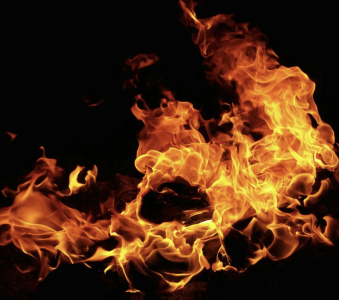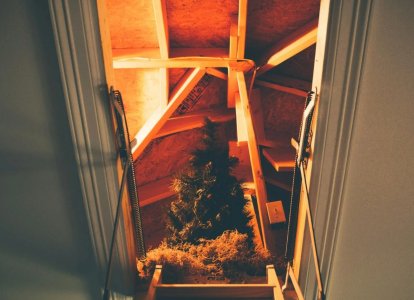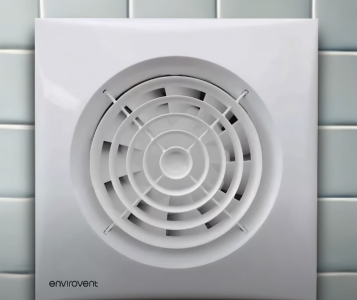Are these 7 spots in your home quietly increasing your fire risk?
By
Veronica E.
- Replies 0
You may have all the basics covered—working smoke alarms, a fire extinguisher nearby, and smart habits around open flames.
But even careful households can miss hidden fire risks.
These dangers tend to build up quietly in areas we don’t often check.
Spaces like laundry rooms, closets, and attics can harbor unexpected hazards.
Let’s take a closer look at seven spots that deserve a second glance.

You might clean the lint trap after every load, but lint can still escape and collect behind or under the dryer.
Over time, this highly flammable buildup—combined with heat from the appliance—can pose a serious fire hazard.
According to the US Fire Administration, clogged dryer vents cause thousands of fires every year.
What to do: Pull your dryer out every few months and vacuum behind and underneath. Check and clean the vent hose, and if clothes are taking longer to dry, it may be time for a deeper clean.
Extension cords make life easier, but overloading them or using damaged cords can lead to overheating and even fire.
Plugging in too many high-powered devices, or hiding cords under rugs or behind furniture, traps heat and increases the danger.
What to do: Use heavy-duty cords for heat-generating appliances, never connect multiple extension cords together, and replace any that look worn or frayed.
Closets are often packed tightly with clothes, boxes, and bedding—but these flammable materials can sit close to outlets, light fixtures, or old wiring.
In older homes, these areas may not be up to current electrical codes.
What to do: Keep storage areas neat and avoid placing items near electrical components. If you live in an older home, have a professional inspect closet wiring for safety.
We often think of the stove as the kitchen’s main hazard, but dishwashers, toasters, and coffee makers can also pose risks—especially if left running unattended or plugged in 24/7.
Older appliances may have worn internal wiring that can short-circuit.
What to do: Unplug small appliances when not in use and avoid running the dishwasher while asleep or away from home. Consider replacing appliances that are more than 10 years old.
Rodents and small animals love attics—and unfortunately, they love chewing on electrical wires, too.
Combine exposed wiring with dry insulation and old wood framing, and the risk of fire increases quickly.
What to do: Inspect your attic regularly, especially if you hear noises above. Look for chewed wires, nesting materials, and other signs of pests, and consider protective measures like wire mesh or deterrents.

Dust, hair, and lint can build up inside bathroom exhaust fans over time.
If the motor overheats while the fan is running—especially for long periods—it can ignite this debris and lead to fire.
What to do: Clean your bathroom fan at least once a year and replace noisy or sluggish models. Always turn the fan off once steam has cleared.

Lights, wreaths, and stored candles all carry risks—especially when stored improperly or used after years of wear.
Decorations often live near cardboard, fabric, or dry pine, all of which can fuel a fire.
What to do: Inspect decorations for damaged wires or loose bulbs. Store candles and lights in a cool, dry space, and keep anything flammable away from heat sources or open flames.
Fire safety isn’t just about alarms and extinguishers—it’s about staying aware of the small things that add up over time.
By checking these overlooked areas and building a few simple habits into your routine, you can help keep your home and loved ones safer.
Read next: One of your kitchen appliances could be a fire hazard. Half a million units recalled—check YOURS now!

Have you found a hidden hazard in your home? Share your experience in the comments—your story could help others avoid an unexpected risk. A little awareness can go a long way in keeping our homes safe!
But even careful households can miss hidden fire risks.
These dangers tend to build up quietly in areas we don’t often check.
Spaces like laundry rooms, closets, and attics can harbor unexpected hazards.
Let’s take a closer look at seven spots that deserve a second glance.

Fire hazards can often go unnoticed in the home—regular checks can help reduce the risk. Image Source: Pexels / moein moradi.
1. Behind the dryer: hidden lint, hidden danger
You might clean the lint trap after every load, but lint can still escape and collect behind or under the dryer.
Over time, this highly flammable buildup—combined with heat from the appliance—can pose a serious fire hazard.
According to the US Fire Administration, clogged dryer vents cause thousands of fires every year.
What to do: Pull your dryer out every few months and vacuum behind and underneath. Check and clean the vent hose, and if clothes are taking longer to dry, it may be time for a deeper clean.
2. Extension cords: don’t overload the line
Extension cords make life easier, but overloading them or using damaged cords can lead to overheating and even fire.
Plugging in too many high-powered devices, or hiding cords under rugs or behind furniture, traps heat and increases the danger.
What to do: Use heavy-duty cords for heat-generating appliances, never connect multiple extension cords together, and replace any that look worn or frayed.
Also read: The Plant That Can Catch Fire (But Doesn’t Burn)
3. Cluttered closets: storage with hidden risks
Closets are often packed tightly with clothes, boxes, and bedding—but these flammable materials can sit close to outlets, light fixtures, or old wiring.
In older homes, these areas may not be up to current electrical codes.
What to do: Keep storage areas neat and avoid placing items near electrical components. If you live in an older home, have a professional inspect closet wiring for safety.
4. Kitchen appliances: more than just the stove
We often think of the stove as the kitchen’s main hazard, but dishwashers, toasters, and coffee makers can also pose risks—especially if left running unattended or plugged in 24/7.
Older appliances may have worn internal wiring that can short-circuit.
What to do: Unplug small appliances when not in use and avoid running the dishwasher while asleep or away from home. Consider replacing appliances that are more than 10 years old.
Also read: Fire hazard warning issued for 429,000 recalled tech accessories
5. Attics: critters and chewed wires
Rodents and small animals love attics—and unfortunately, they love chewing on electrical wires, too.
Combine exposed wiring with dry insulation and old wood framing, and the risk of fire increases quickly.
What to do: Inspect your attic regularly, especially if you hear noises above. Look for chewed wires, nesting materials, and other signs of pests, and consider protective measures like wire mesh or deterrents.

Attics may seem quiet and out of the way, but they can hide fire risks like damaged wiring or rodent activity. Image Source: Pexels / Jeswin Thomas.
Also read: Is this fire truck really red? What a popular optical illusion reveals about your brain
6. Bathroom exhaust fans: easy to forget, easy to overheat
Dust, hair, and lint can build up inside bathroom exhaust fans over time.
If the motor overheats while the fan is running—especially for long periods—it can ignite this debris and lead to fire.
What to do: Clean your bathroom fan at least once a year and replace noisy or sluggish models. Always turn the fan off once steam has cleared.

Dust and debris buildup in exhaust fans can lead to overheating—regular cleaning helps prevent fire hazards. Image Source: YouTube / eFIXX.
Also read: A popular holiday decoration is now linked to fire risk—and it’s sparking concern among safety experts
7. Holiday decorations: festive, but flammable
Lights, wreaths, and stored candles all carry risks—especially when stored improperly or used after years of wear.
Decorations often live near cardboard, fabric, or dry pine, all of which can fuel a fire.
What to do: Inspect decorations for damaged wires or loose bulbs. Store candles and lights in a cool, dry space, and keep anything flammable away from heat sources or open flames.
Also read: Fire damage claims–The crucial information every homeowner needs to know immediately!
Safety habits worth keeping year-round
- Test smoke alarms once a month
- Change batteries in alarms twice a year
- Keep a fire extinguisher on every floor and know how to use it
- Create a fire escape plan and practice it with your household
- Don’t ignore flickering lights or repeatedly tripped breakers—these may be early warning signs
Fire safety isn’t just about alarms and extinguishers—it’s about staying aware of the small things that add up over time.
By checking these overlooked areas and building a few simple habits into your routine, you can help keep your home and loved ones safer.
Read next: One of your kitchen appliances could be a fire hazard. Half a million units recalled—check YOURS now!
Key Takeaways
- Lint buildup behind or underneath the dryer and in the vent hose is a major fire hazard—clean these areas regularly and check for slow drying times.
- Extension cords can overheat when overloaded or hidden behind furniture; use proper-rated cords and replace any that are damaged or frayed.
- Closets, attics, and bathrooms can all harbor fire risks from old wiring, rodent damage, or dust buildup in exhaust fans.
- Appliances like dishwashers and toasters, especially older models, may pose hidden dangers if left running unattended or plugged in around the clock.
Have you found a hidden hazard in your home? Share your experience in the comments—your story could help others avoid an unexpected risk. A little awareness can go a long way in keeping our homes safe!






